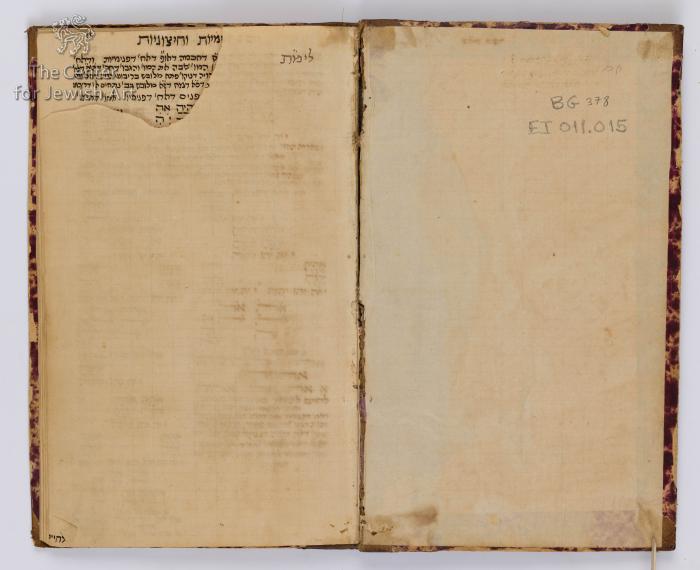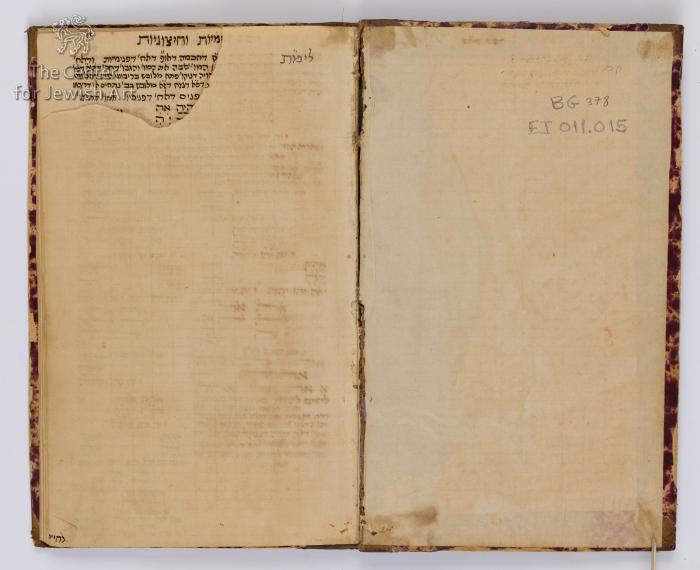Obj. ID: 53444 Sar Shalom ben Yitzhak Mizrachi Didya Shar'abi, Siddur ha-Rashash, Jerusalem, circa 1890

sub-set tree:
The following description was prepared by William Gross:
Sar Shalom Sharabi (Hebrew: שר שלום מזרחי דידיע שרעבי), 1720–1777, was a Yemenite-Israeli Jewish Rabbi, Halachist, Chazzan and Kabbalist. In later life, he became the Rosh Yeshiva of Bet El Yeshiva in the Old City of Jerusalem. His daughter married Rabbi Hayyim Abraham Gagin of Jerusalem, making him the great-great-grandfather of Shem Tob Gaguine, the "Keter Shem Tob."
Sar Shalom Sharabi was born in Jewish Sharab, Yemen. He moved to Palestine, then under Ottoman rule, in fulfillment of a vow. On his way, he stayed in India, Baghdad and Damascus. He was one of the earlier commentators on the works of the Ari, a major source of Kabbalah. His Siddur was known as the "Siddur Ha-Kavvanot," and is the main siddur used today by Kabbalists for prayer, meditation, and Yeshiva study. It is a Siddur with extensive Kabbalistic meditations by way of commentary.
Siddur according to the Rashash, for the ten days of Repentance and Yom Kippur. It is in a Yemenite-Orinetal hand from the early 20th century. The manuscript was copied by R. Emanuel Elnakash, one of the Beit El Yeshivah's Yemenite sages, who embellished it with his comments.
It is comparable to his handwriting in another part of a prayer book that he copied that is described in "Moreshet" catalog 13 (Adar 2017), p. 157, Item 338. It is similar as well to his writing on the Tichlal copy of the Rashash" 's meditation, manuscript no. 1299 in the Rl Ya'akov Moshe Hillel Library; to his comments on the Et\ Haim pages (Jerusalem, 1866; and to a copy in the above library, no. 3004. In his comments, he shows what he heard from R. Aaron Perera and from his teacher, R. Yihya Tzarum.
51 pp












